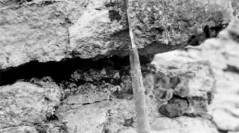

 Comptes Rendus Palevol
6 (1-2) - Pages 47-58
Comptes Rendus Palevol
6 (1-2) - Pages 47-58Fossil oyster assemblages have a great diversity of geometries. Their accumulations can be tridimensional (shell bed), within a strata, or bidimensional, on a strata surface (hardground). A taphonomic analysis can be used to discriminate these assemblages according to the way in which time has been recorded in sedimentary sequences. This preliminary analysis conditions palaeoenvironmental interpretations. Thus, a typology of the various existing assemblages is proposed according to several examples of shellbeds of the Upper Cretaceous of the North-Aquitaine basin (SW France) and the Upper Neogene of Andalucía (SE Spain).
Taphonomy, time-averaging, condensation, Shellbeds, oysters, palaeoenvironmental reconstructions